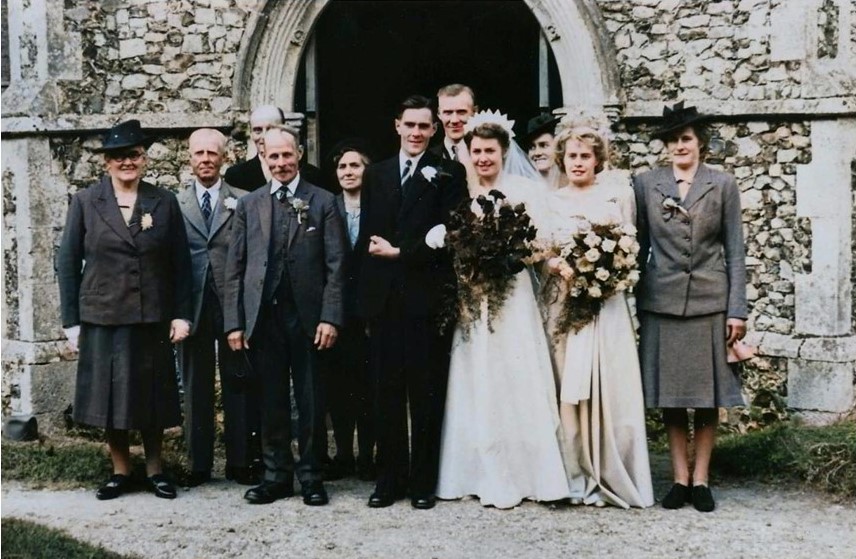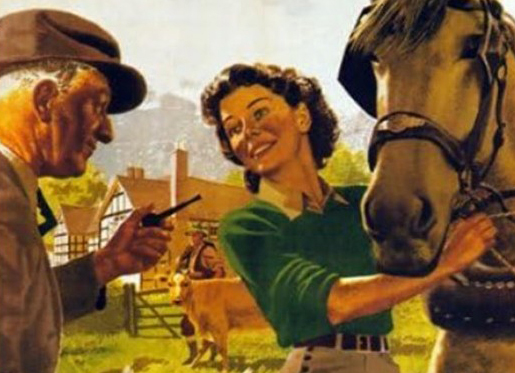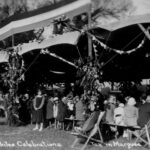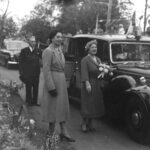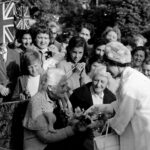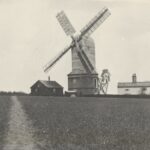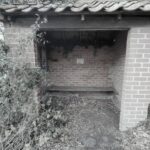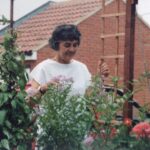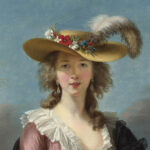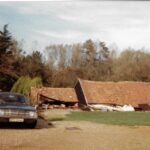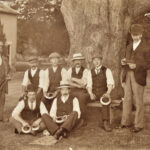Per the 1941 Agricultural Farm Survey there were only 11 women working on the farms in Benhall & Sternfield, all on a part-time basis, no full-time workers.
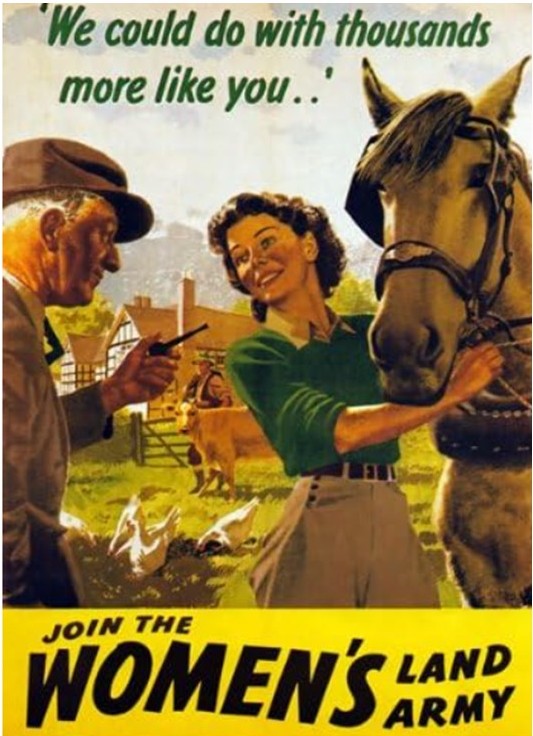
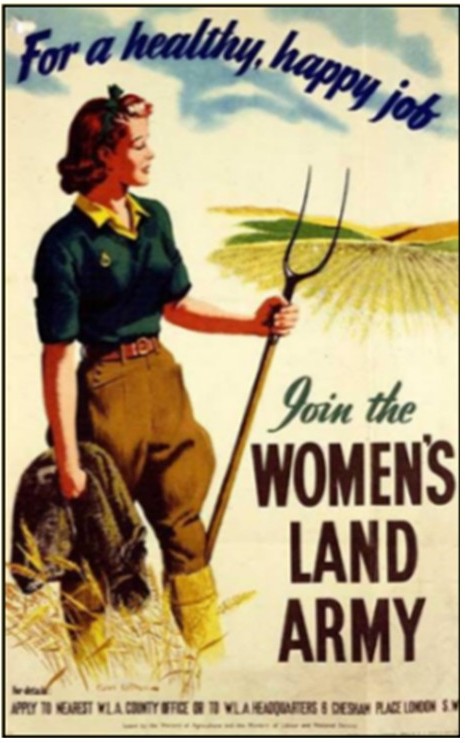
From the book Working the Land by Len Sharman.
“As time went on labour became more and more scarce during WWII and the Women’s Land Army formed. They were really marvellous. I had one local woman with me for three years. But I also had one young girl from a shop in London coming into forestry who was sent out to cut nettles from around young trees. She had no gloves and suffered with nettle rash and I never saw her again.
Other girls came to the neighbouring farms and looked after and milked the cows; other gangs would go out hoeing sugar beet and pulling and topping in the autumn; they would also help with the threshing.”
From an oral recoding of Bob Sharman 2025:
“Kit, my mother, was born 1922 in Ipswich and she was christened Doris Elizabeth but she hated Doris and never used Elizabeth, so she was known as Kit. She was on fire-watching duty in 1939 when the Ipswich Docks were being bombed fairly heavily.”
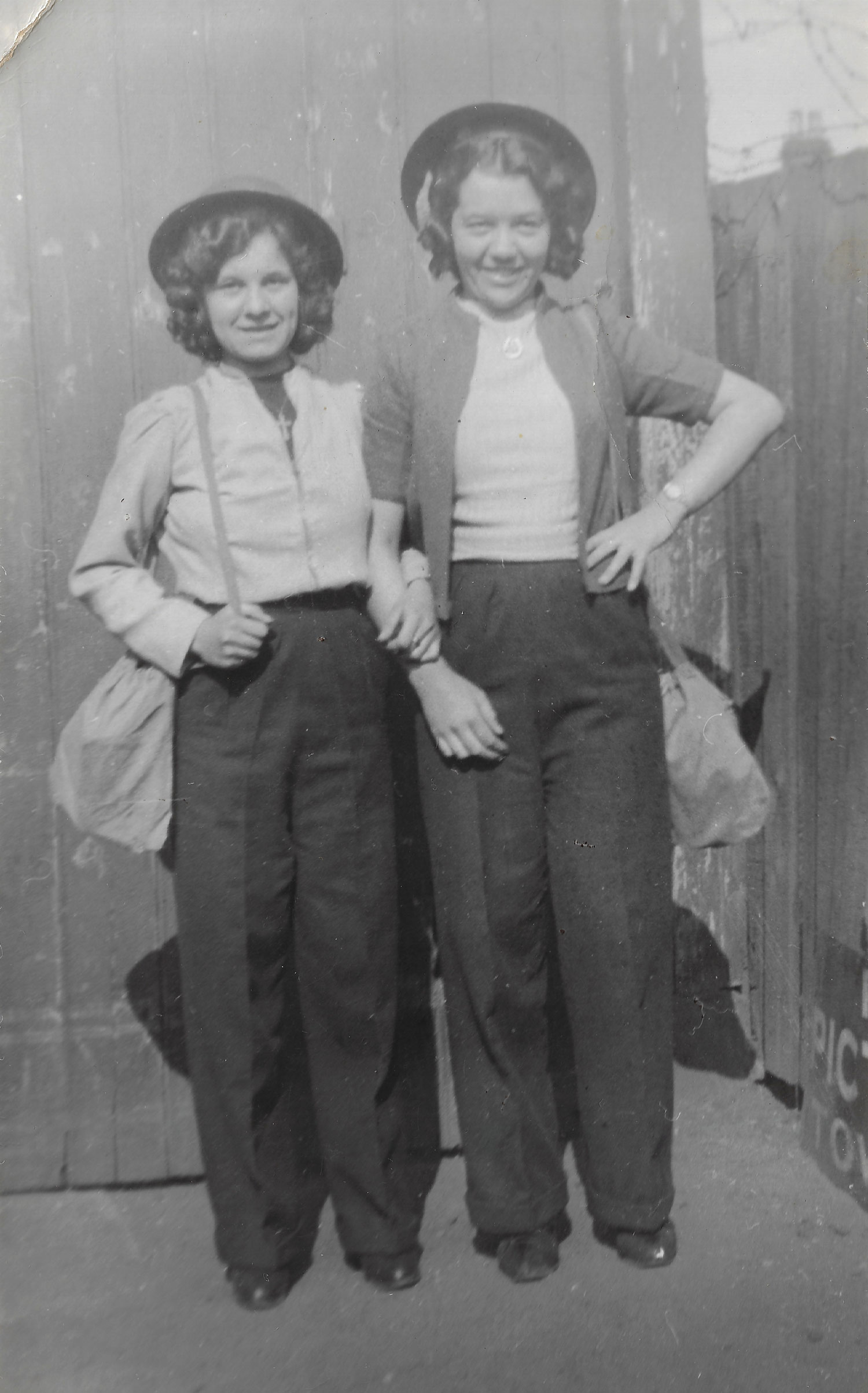
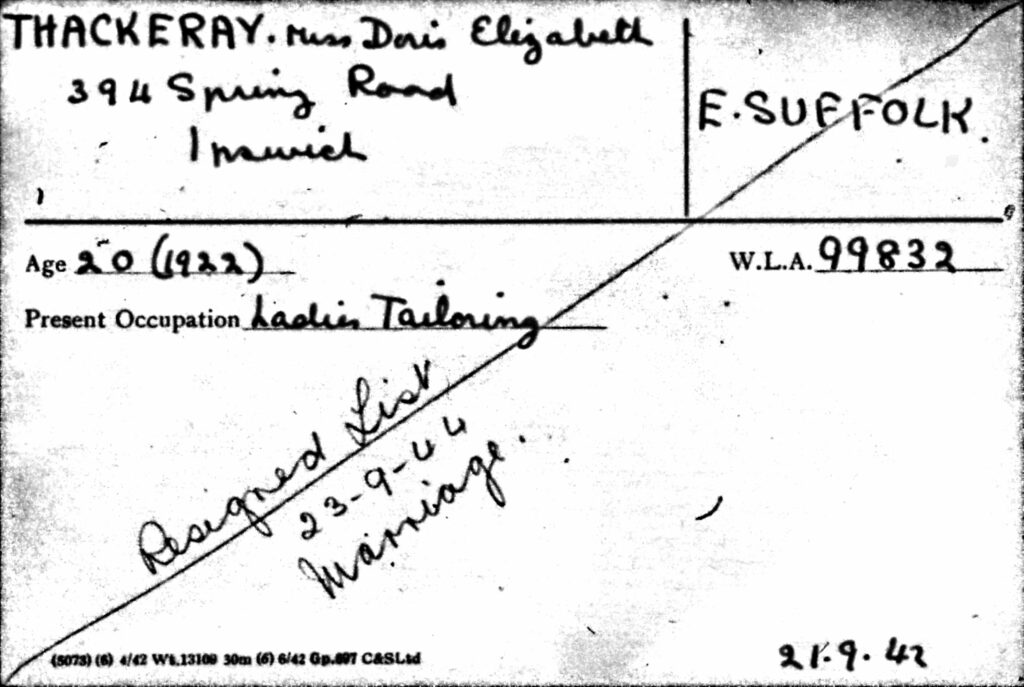
“My grandad, her dad, as she was the youngest of the family and he already had two sons in (one in Royal Engineers and the other in the Territorials) said that he didn’t want anyone else to go in and so he suggested she do something more sensible. So, she enlisted at 18 in the Women’s Land Army (WLA ref 99832). It was a complete culture shock for someone from Ipswich, she didn’t realise milk came out of cows, thought it came out of bottles!
She went in as an Army girl but was always a bit fiery, right was right with Kit. One day their group of girls went by lorry out 10 miles away from their hostel to do work on a farm and they worked all day, had little to eat and no-one turned up to pick them up. So, they had to walk back. When she got back Kit complained and was told she would make a good forewoman!
Kit spent 6 weeks at Sutton Hoo doing her forewoman training and ended up in charge of 22-24 girls back at South Elham. She had to write why she wanted to be a forewoman, the qualities, which she wrote into her Land Army notebook. The book contains pages concerning hedging, sugar beet & thistling, war time recipes and phone numbers…”
It also states, “No dungarees above the knee, no rubber boots in hot weather!”
From the memoirs of local farmer Jack Sampson:
“As time passed and the call up for military service continued, this resulted in the formation of the Women’s Land Army. Young women, after training, started appearing on many farms. They were particularly suited to dairy and livestock work and many lived and worked as family on the farms.”
The Sampson family decided to request help from the WLA to help with their dairy herd so Olive Saunders (WLA ref 101691) came to Cottage Farm to take up her duties. “She had trained at a farm in Hoxne. At this stage in the war every effort was made to grow the maximum amount of food to meet the strict rationing in force at the time.”
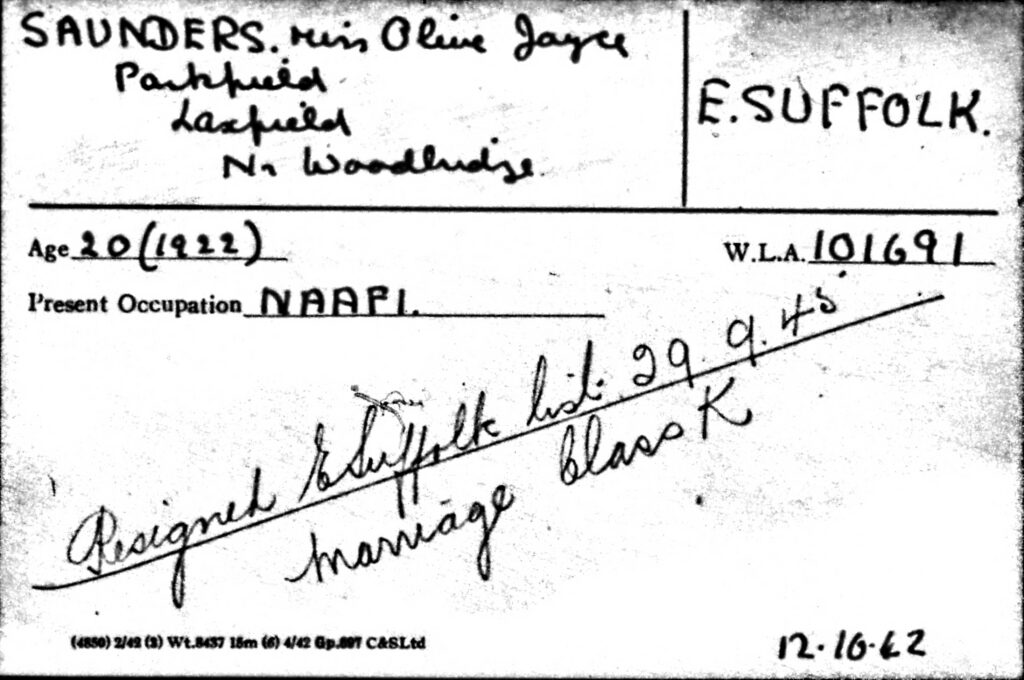
Olive Saunders later resigned from the WLA on 29th September 1945 and married Jack Sampson in October of the same year!
